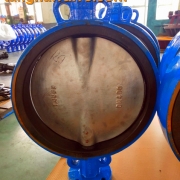Installation Locations of Concentric Butterfly Valves in Marine Applications
Concentric butterfly valves, also known as centerline butterfly valves, are widely used in marine piping systems due to their compact structure, light weight, quick operation, cost efficiency, and adaptability to various media. Below are the typical installation positions and application systems on ships:
Common Installation Locations & Applications
Ballast Water System
Installed between ballast tanks and ballast pumps.
Used to control seawater intake and discharge, adjusting ship stability and draft.
Cooling Water Systems (Seawater/Freshwater)
Installed on inlet/outlet pipes of engines, condensers, and heat exchangers.
Controls the flow of cooling water, ensuring efficient heat dissipation.
Bilge System
Located at the suction lines of bilge pumps or branch pipelines.
Manages bilge water discharge from different compartments.
Sanitary and Sewage Systems
Installed between sewage holding tanks and treatment units.
Ensures safe flow control and maintenance isolation.
Ventilation and HVAC Systems
Mounted in ventilation ducts to regulate or shut off airflow.
Ideal for confined spaces with limited installation clearance.
Fuel and Lubricating Oil Systems
Applied in low-pressure areas for oil flow control and emergency shut-off.
Suitable for non-critical and low-temperature locations.
Deck Service Lines (e.g., Fresh Water, Tank Washing Water)
Installed on deck piping systems to manage service fluid distribution.
Found under deck, in passageways, or utility corridors.
Installation Notes for Concentric Butterfly Valves
Recommended positions: Mid-pipeline or near the equipment inlet/outlet.
Shaft orientation: For horizontal pipelines, it’s advised to install with the shaft vertical (disc horizontal).
Ease of maintenance: Ensure installation allows for convenient access.
Suitable media: Seawater, freshwater, air, sewage, light oil, and other non-corrosive or mildly corrosive fluids.

 tanghaivalve.com
tanghaivalve.com 

 © Copyright 2020 Tianjin Tanghaidongyang Valve Co., Ltd. All Rights Reserved.
© Copyright 2020 Tianjin Tanghaidongyang Valve Co., Ltd. All Rights Reserved.